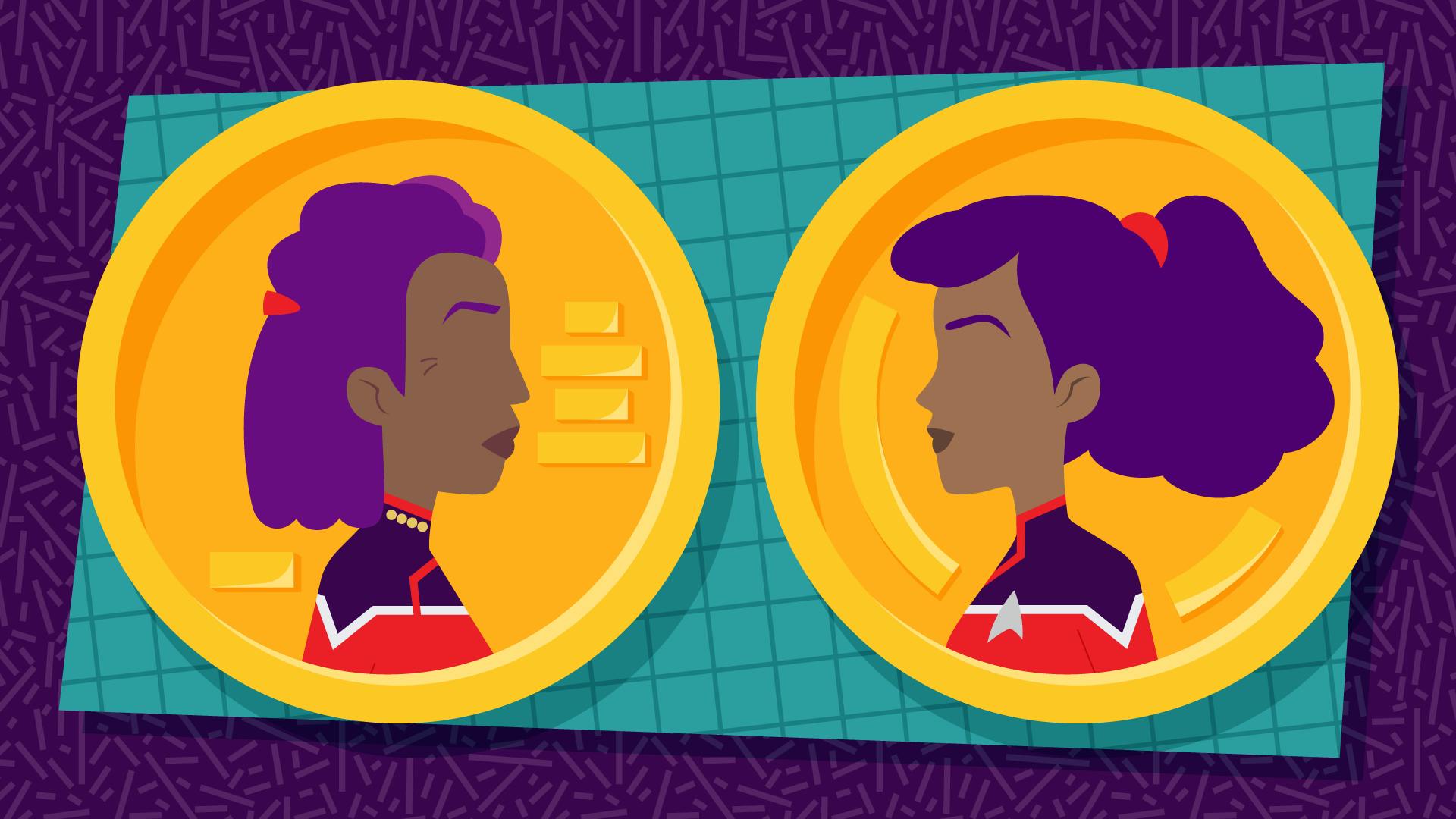Published Sep 19, 2024
Star Trek: Lower Decks Illuminates Another Side of Starfleet
Ensign Mariner leads her team where no Lower Deckers have gone before.
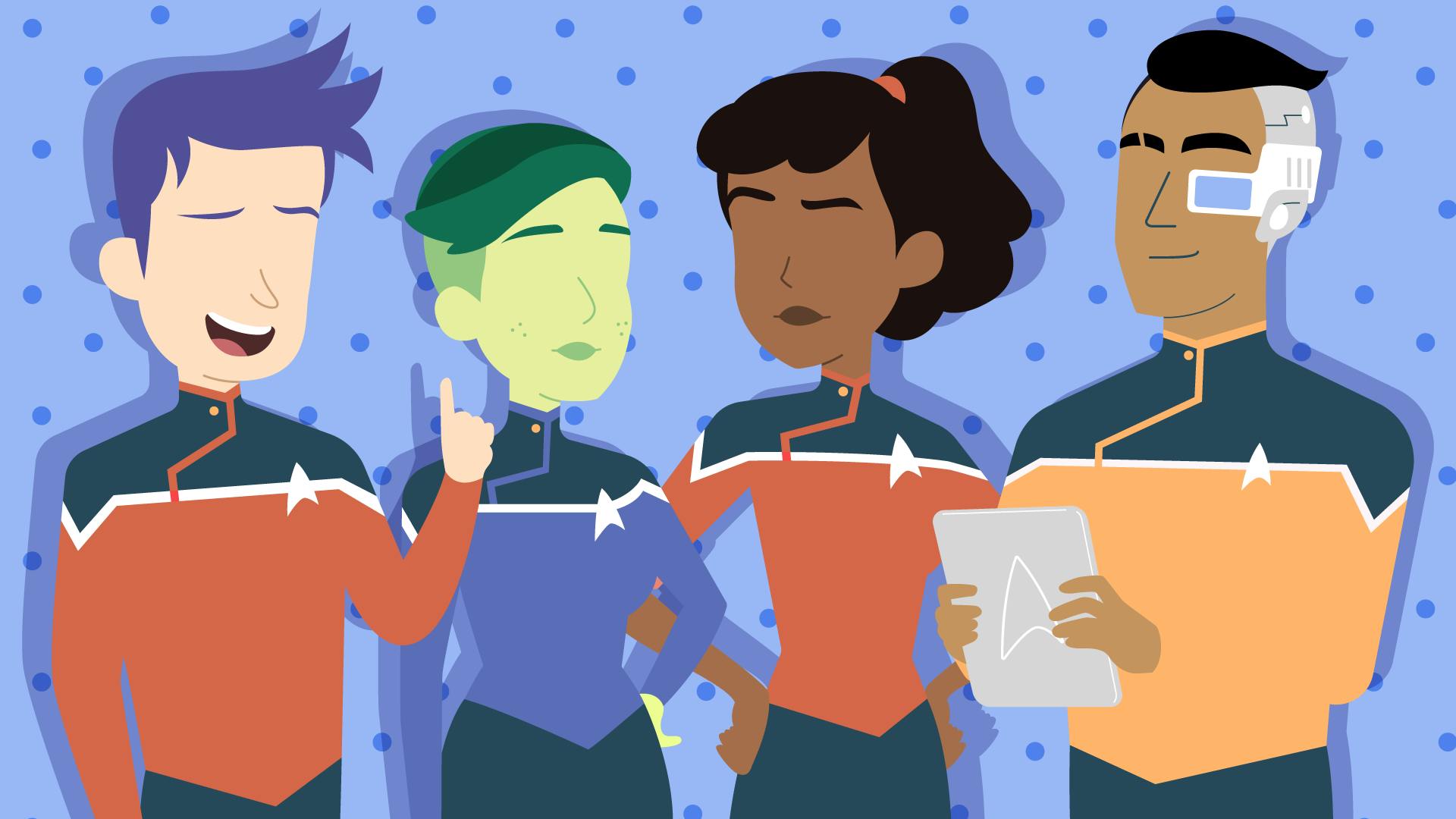
StarTrek.com
Over the course of the first season of , the crew of the U.S.S. Cerritos gives us a glimpse of a side of Starfleet we haven't seen before. Rather than a narrative focused on the Federation's A-List heroes pushing the envelope of exploration on the bridges of Starfleet's flagship vessels, Lower Decks centers characters performing support functions on support starships.
By pitting the Lower Deckers against other Federation officers and drawing on Trek's voluminous existing lore, Lower Decks uncovers a previously unseen side of Starfleet. Let's take a look.
A Spectrum of Foils
This Season on Star Trek: Lower Decks | Season 1 Sneak Peek
One of the essential narrative devices utilized by Lower Decks is that of character foils. By contrasting one character against another, the similarities (and differences) between them can be better illuminated, and a deeper understanding of all involved can be achieved.
The first character foils we're introduced to in the first episode of Lower Decks, "," are , whose disdain for rank and protocol have been made clear, and , who believes his slavish devotion to protocol will land him in the captain's chair one day.
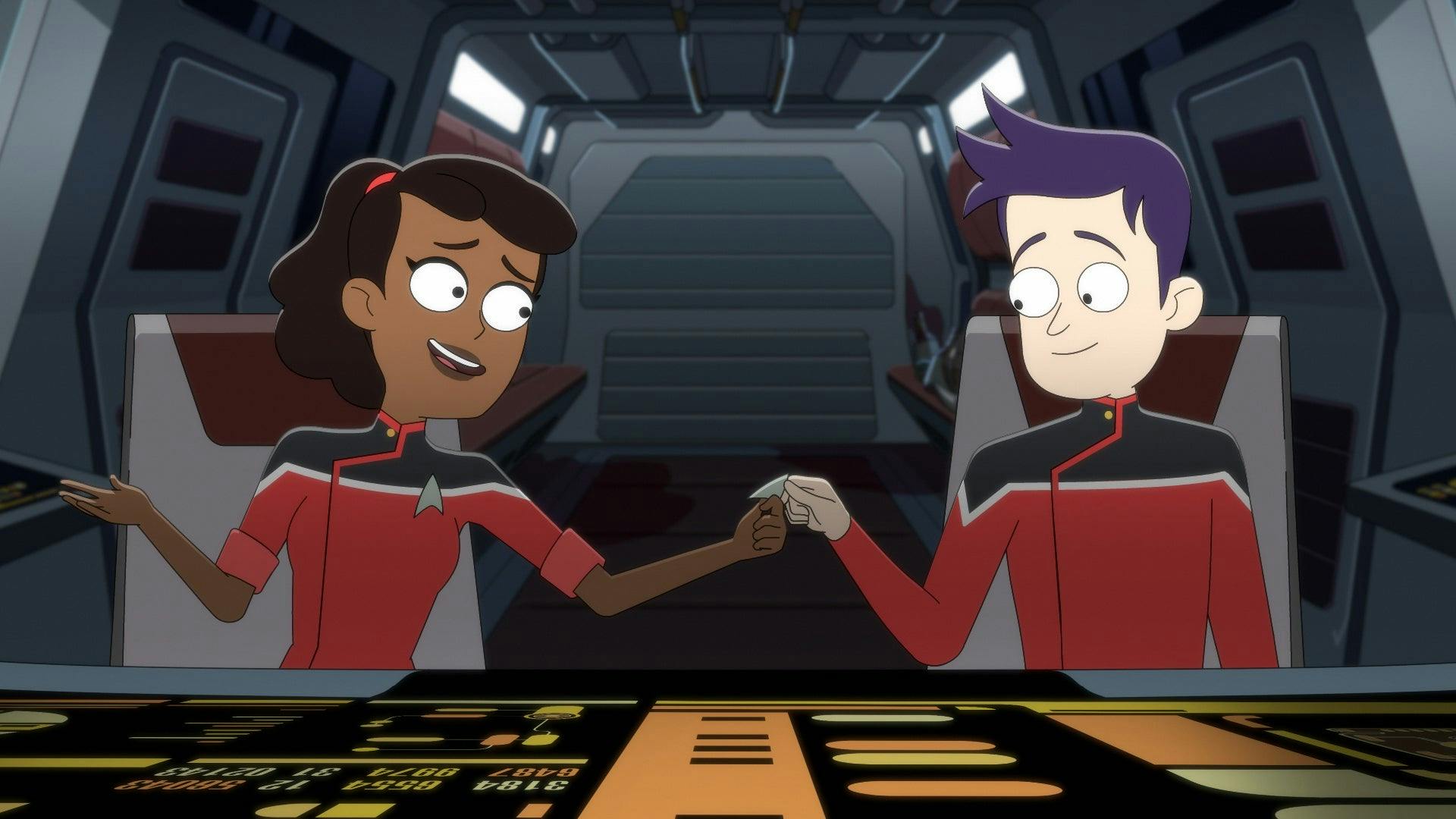
"Envoys"
StarTrek.com
At first blush, it might seem as though the two characters would be in opposition to one another. However, over the course of episodes like "," we see how the pair of best friends navigate their differences in sensibility to negotiate where they'll find common ground. The pairing echoes many of the unlikely but indelible friendships that have been forged between characters throughout Trek's history, like the relationship between the seemingly cold and logical Spock and the passionate Kirk on . These foils provide a testament to how personality types as disparate as Mariner and Boimler's can still each qualify as incontrovertibly 'Starfleet.'
It isn't just among the Lower Deckers that Lower Decks uses foils to great effect. Mariner and her team — which is rounded out by extremely enthusiastic brand-new recruit and still-figuring-it-out fresh cyborg — are used to create a foil for the "archetypical" Trek command team.

"Moist Vessel"
StarTrek.com
The primary command team that serves as a foil for Mariner's Lower Deckers is, naturally, 's team on the Bridge of the Cerritos. The starring roles of the ship, includes the infuriatingly competent First Officer Jack Ransom, the short-tempered but sweet-hearted Head of Security Lieutenant Shaxs, and Dr. T'Ana, a Caitian doctor unburdened by bedside manner.
But while Freeman's command team may appear to be unstoppable A-listers from the perspective of the Lower Deckers, that isn't exactly the way they're perceived by the crews of other ships in Starfleet.
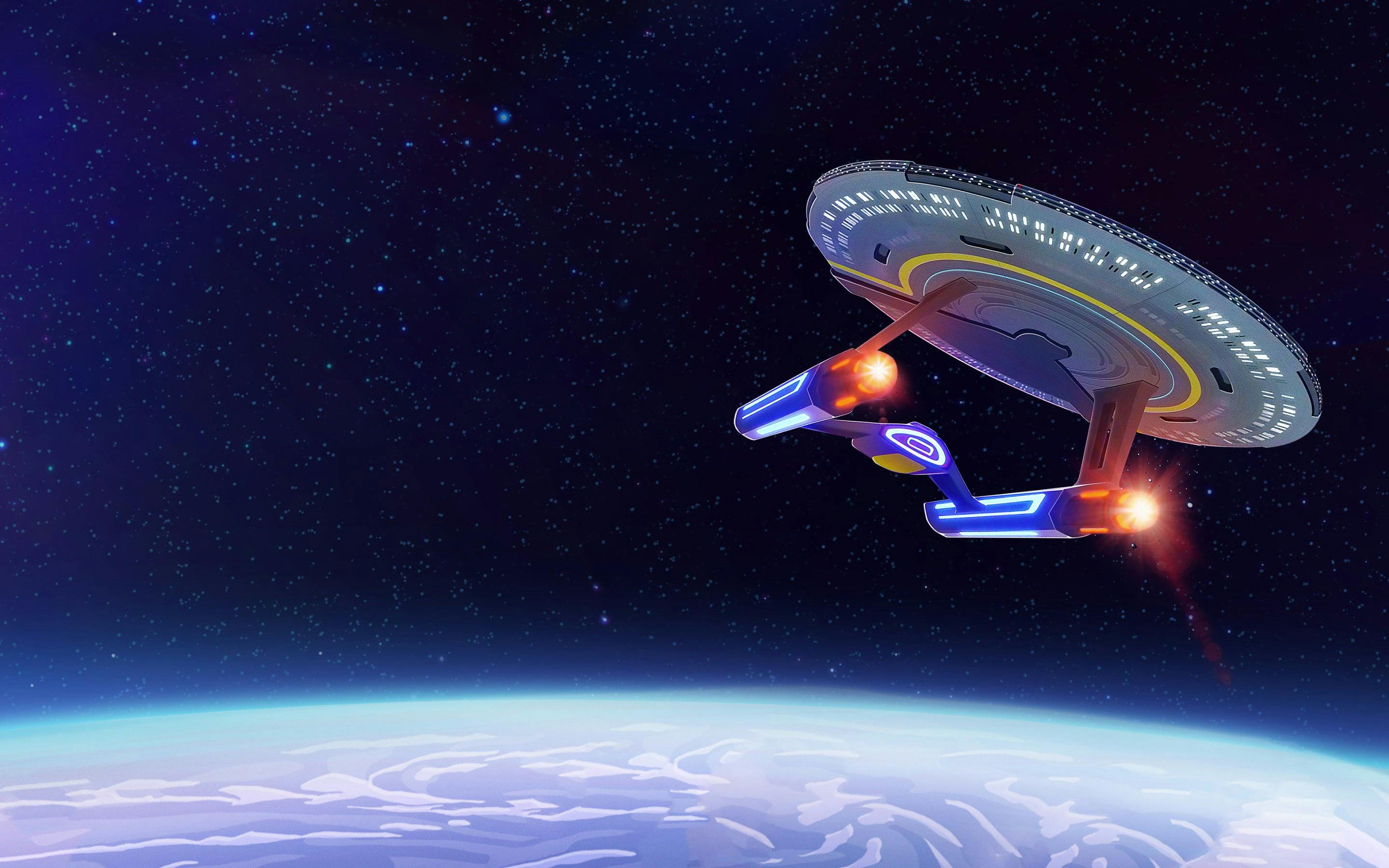
StarTrek.com
While one's expectation for a Trek show might be a focus on the Federation's flagship vessels as they undertake exploratory missions, the Cerritos serves more of a support function within the larger fleet. In fact, one clue as to the primary function of the Cerritos is the yellow band that decorates its hull. Just like the uniforms worn by Starfleet personnel, California-class starships have color-coded roles, with the yellow band on the Cerritos indicating its engineering role.
However, the Cerritos isn't even the top of the engineering heap, instead being primarily utilized for engineering projects that become necessary during "second contact" missions. The role of the Cerritos in the demolition of Mixtus III is to specifically serve as support for the Vancouver, a fact underscored by the Vancouver's captain's insistence that Freeman "take it in," condescendingly telling her that she might one day hold the command of such a vessel herself.
Rather than the command crew of the Cerritos being the equivalent of the space heroes found on the bridge of the Enterprise(s) or Voyager, commanding respect from anyone in a Starfleet uniform, Freeman and her crew instead occupy a more nuanced (and less glamorous) stratosphere.
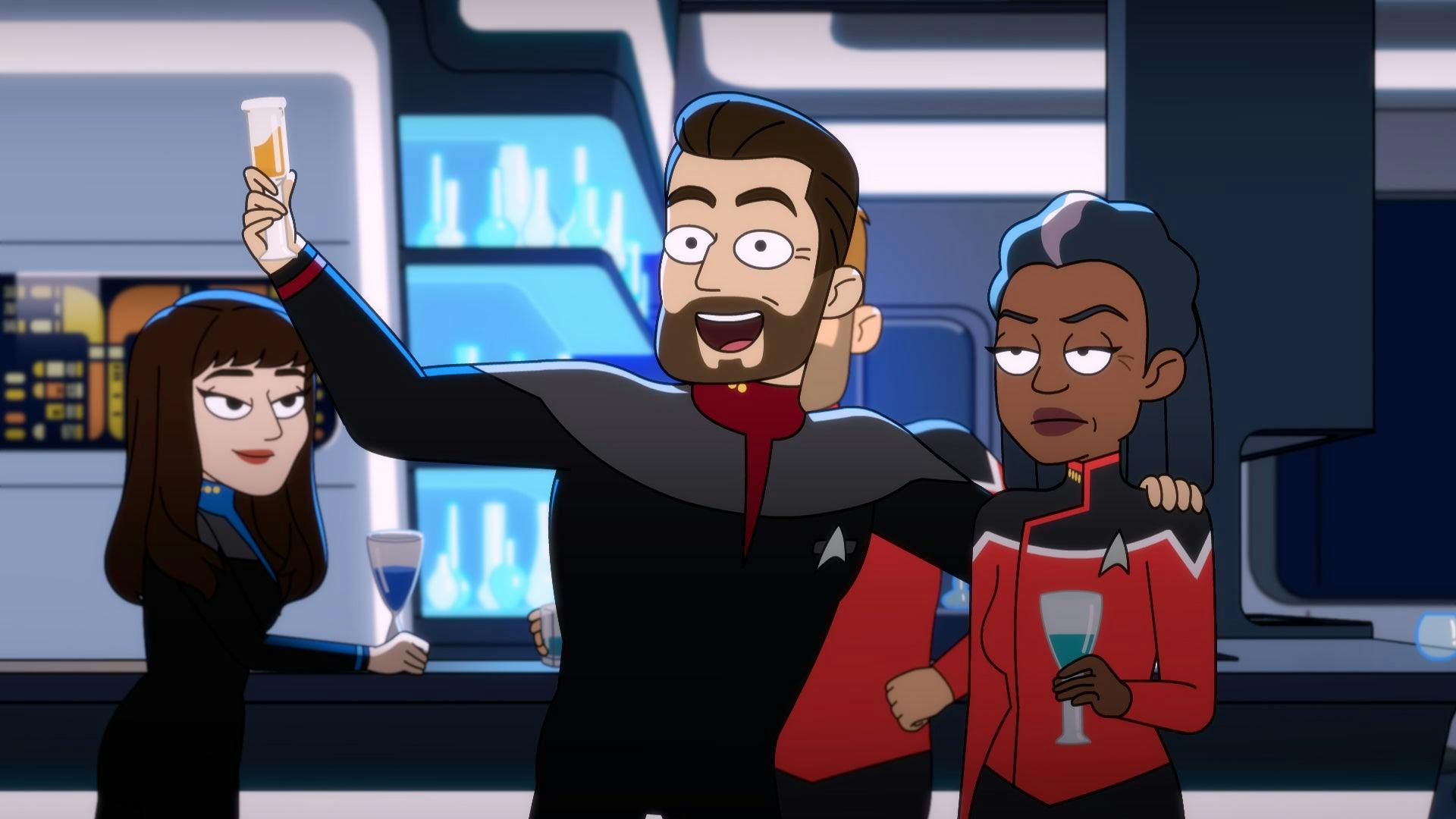
"No Small Parts"
StarTrek.com
As a result, Freeman is susceptible to insecurity about how the crew of the Cerritos is perceived in a way that we don't often see from a Federation captain, sometimes even allowing her emotions to get the best of her.
Another foil for Mariner, Captain Amina Ramsey of the U.S.S. Oakland, arrives on the Cerritos accompanied by her own no-nonsense command team.
Ramsey is a close friend of Mariner's from the Academy, but Amina's trajectory — directly into the command chair, calling to mind those flagship A-list command crews discussed earlier — can be contrasted with Mariner's outright rejection of rank. Besides, Ramsey offers Mariner the opportunity to join her command crew on the Oakland, a position that Mariner rejects. Even given the chance, the protagonist of Lower Decks isn't interested in the conventional path forward through Starfleet.
Lore (Not Data's Brother)
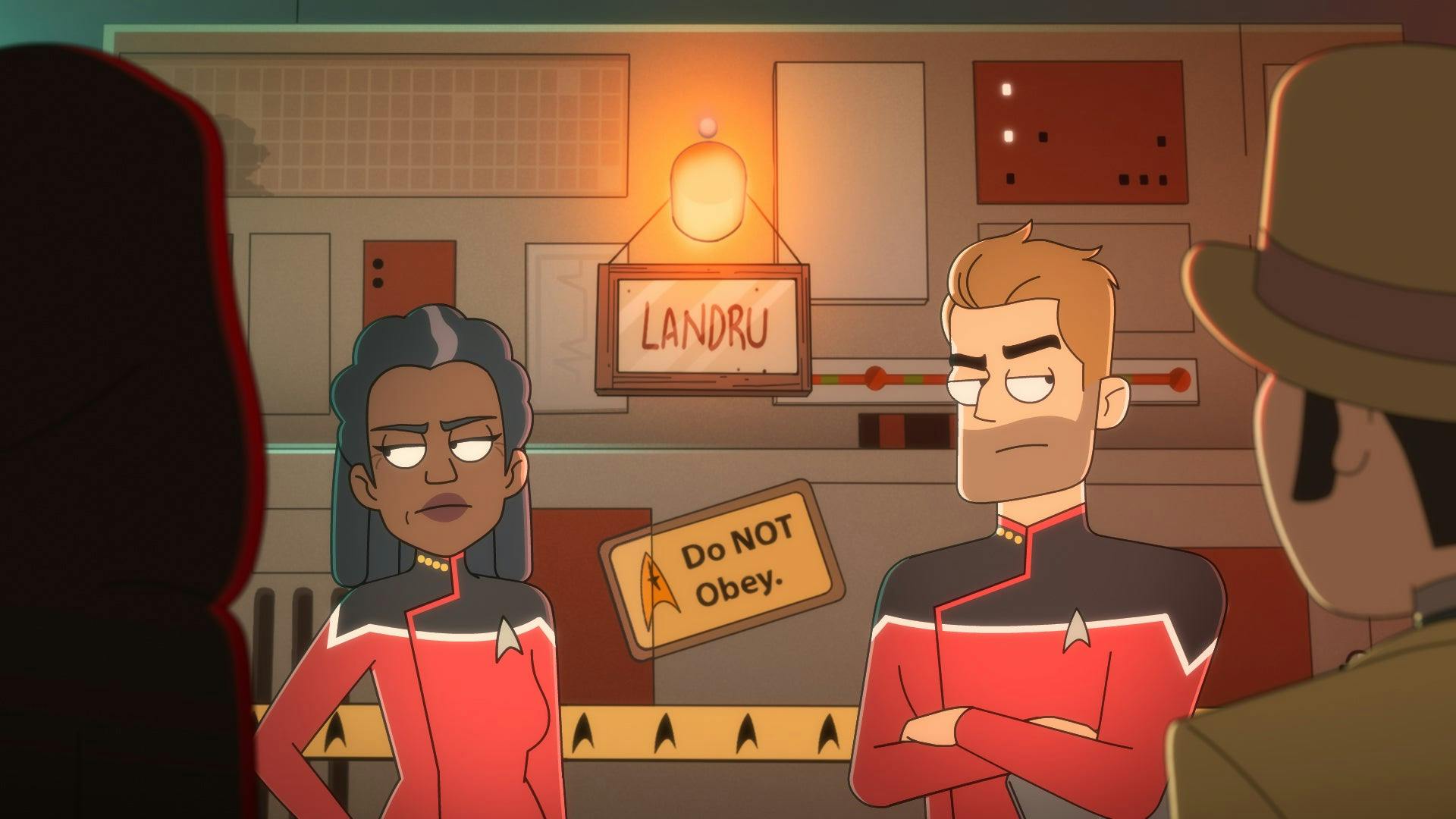
"No Small Parts"
StarTrek.com
Star Trek has a history of using earlier stories in a meaningful way; consider the episode "" for example.
Lower Decks includes references to lore from every corner of the Trek canon, from to , with references to the latter serving to further integrate the original animated series into canon that it might have been before.
One of the most significant instances of a reference to previous Trek stories in Lower Decks is the appearance of Landru, who rules over the Red Hour on Beta III. Landru's first appearance was in the TOS episode "," an especially significant episode for Trek lore because it is the first time is mentioned (and perhaps equally significant is Kirk's immediate dismissal of General Order 1).
Once they've returned to the Cerritos from Beta III, Freeman laments to Ransom that she hates seeing a society suffer "because Starfleet has a policy of some intervention." The conversation reveals that, in spite of Mariner's assumptions to the contrary, Freeman may have some personal misgivings about Starfleet protocol. But beyond that, it gives Freeman the opportunity to draw upon existing Trek lore to engage in the conversation about the Prime Directive that's been taking part since Stardate 3156.2.
The Perfect Pakled Party
Star Trek: Lower Decks - Pakleds Attack
The Lower Decks penchant for foils and lore perfectly converge in the first season finale, "," when the crew of the Cerritos faces off against one of Trek’s most infamous adversaries — the Pakleds!
The Pakleds don't just pay homage to Trek lore solely by virtue of their appearance on Lower Decks; their inclusion has a deeper significance. In 's "," the episode that first introduced the Pakleds, Captain Picard was undergoing a medical procedure when the crew encountered the (at first) unassuming aliens. As a result, it was not the captain at the helm of the Federation flagship when it encountered the Pakleds; instead, First Officer Riker was in command. While everything works out in the end, Riker makes some missteps handling the situation along the way.
In "No Small Parts," we get the chance to see the full potential of Riker in command of a starship fulfilled, as the Titan arrives at just the right moment to heroically rescue the Cerritos before it is destroyed by the powered-up Pakleds. In sharp contrast to the actions taken by First Officer Riker aboard the Enterprise-D years earlier, Captain Riker of the Titan arrives in full command of the situation, unyielding to the Pakleds as the Cerritos is rescued.
By making progressive advancements, the Pakleds have steadily increased their abilities since their first appearance on TNG, and they now represent a legitimate threat to a Federation starship. It's the perfect antecedent for the core thesis of Lower Decks; yes, individuals can come together to accomplish something greater than they might have been able to achieve on their own — but this axiom is just as true for the selfish Pakleds as it is for the ensigns on the Cerritos.
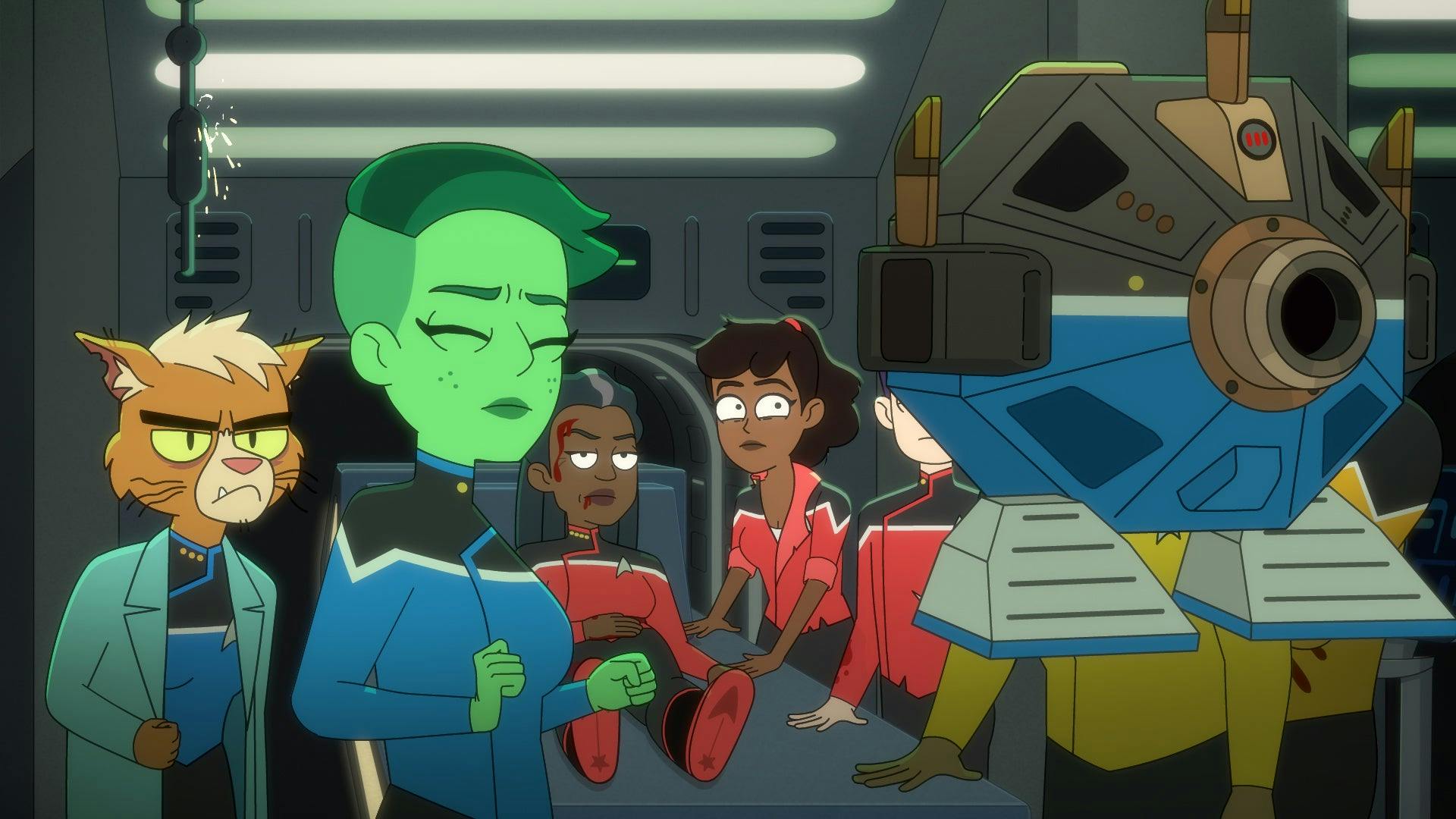
"No Small Parts"
StarTrek.com
But could there be a perfect, mess-free solution to the Pakled attack on the Cerritos? At a key point, it seems as though the newly arrived might be able to single-handedly save the ship from the Pakled attack. But just as the idea of the Solvang's perfection is subverted, Peanut Hamper shirks personal responsibility, teleporting away, and leaving the crew of the Cerritos to die.
However, just before the crew of the Cerritos is forced to abandon ship, Captain Riker and the Titan arrive and fight off the remaining Pakleds!
At first glance, it almost seems as though the arrival of the Titan is the equivalent of a deus ex machina — an unexpected, inexplicable force that arrives at the last possible moment and saves the heroes. However, thanks to the extensive existing canon of Trek, this is not the case; for one thing, we've seen Riker's personal development — he wasn't simply given the assignment to be captain of the Titan, we watched him earn it (unlike the Pakleds, who haven't earned the technological advancements they have accumulated since they faced off against the Enterprise-D, they've simply stolen them).
Although it might be tempting to say that the arrival of the Titan was a fortuitous coincidence, it is not. One of the benefits of Starfleet is the assurance that you will have other starships prepared to come to your assistance in an emergency, just as it creates the expectation that you will respond to the distress calls of other ships. The heroic arrival of the Titan isn't a deus ex machina — it's the Starfleet system working as designed.
Where No Lower Deckers Have Gone Before
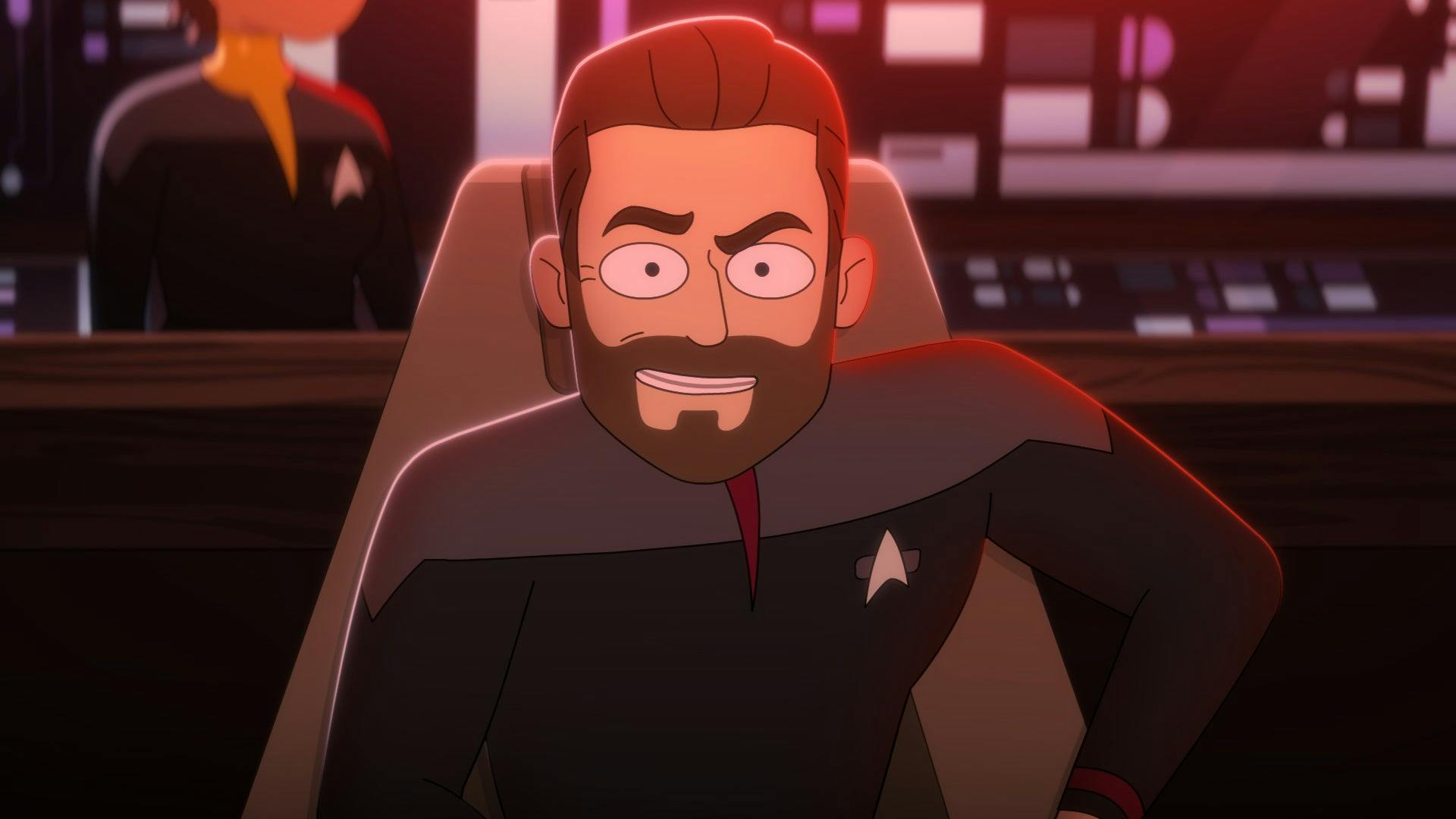
"No Small Parts"
StarTrek.com
In TNG episode "," Riker recounts an incident that took place when he had been only seven months out of the Academy, remembering a time when he was an ensign with his "head still ringing with words like 'duty' and 'honor.'" It's a far cry from the self-assured Captain Riker we see in command of the Titan at the climax of "No Small Parts."
Thanks to the excellent utilization of Trek lore by Lower Decks, Riker's arrival to fend off the powered-up Pakleds is especially meaningful. Riker isn't simply a perfectly realized starship captain, sprung from the head of Zeus at just the right moment — we can trace his command all the way back to that fresh-faced ensign who, like Boimler, may have felt that the Boimler Effect really should have been about slavish devotion to one's schedule.
But while it might be tempting to assume that Riker is simply a foil for Boimler, dialogue at the conclusion of "No Small Parts" suggests there is a more likely candidate. When Riker reunites with Freeman, he remarks that she was sort of his cha’DIch, echoing the sentiment expressed by Mariner to Boimler at the conclusion of "Second Contact" and suggesting that Captain Riker is a foil for Mariner.
To quote Riker's familiar remarks on Archer and the crew of the first Enterprise, "Those guys had a long road getting from there to here." The same can be said of Mariner and her crew of Lower Deckers — and I can't wait to watch every step of their journeys along the way.



